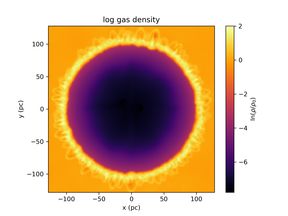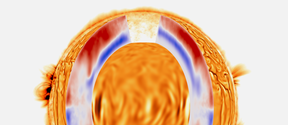High-performance computing Lab (HPCLab)
Our research group develops and utilises high-performance and data intensive computing (HPC) methods and applications for heterogeneous NUMA-architectures.

Fast burning giant stars end as a Supernova (SN) explosion, ejecting plasma and dust into the ambient interstellar medium (ISM). The ejecta includes many heavier elements that are essential to form dust, planets and ultimately life, and which can only be fused in the extreme pressures present at the moments of Supernova. Dust forms in the ISM, as gas particles collide and stick together and as they collect into clouds on vast scales enough of the dust and gas can collapse under gravity to form stars and planets.
A supernova blast wave destroys more dust in the ISM than it ejects in the explosion. The rate of dust extinction modelled in SN is too high to explain the great abundances of dust observed in early galaxies, which are characterised by very high rates of SN. Our experiments with Florian Kirchschlager (UCL, UK) and Lars Mattsson (Nordita, Sweden), due to be published in the Monthly Notices of the Royal Astronomical Society, are the first to include the effects of dust shattering by grain-grain collisions, as well as the annihilation by the blast wave and heating itself. The results indicate an order of magnitude faster dust annihilation than previously estimated. This poses an even greater challenge to explain the process of dust formation in young galaxies.

Our research group develops and utilises high-performance and data intensive computing (HPC) methods and applications for heterogeneous NUMA-architectures.
We are an internationally-oriented community and home to world-class research in modern computer science.